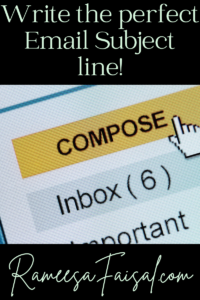rameesafaisal.com uses affiliate links. That means that if you buy something through these links, we may earn a commission at no additional cost to you.

Raise your hand if you love receiving generic, impersonal emails. Anyone? No? I didn’t think so. We all enjoy feeling like we’re more than just a number in a database, right? You see, personalization in email marketing isn’t just a buzzword—it’s an absolute must if you want to engage your customers and keep them coming back for more. So buckle up, as we’re about to dive deep into the world of personalized email campaigns.
The Power of Personalization
First, let’s take a moment to appreciate the power of personalization. Or, as I like to call it, the art of making your customers feel like they’re your one and only. According to a study by OneSpot, personalized email campaigns can drive a six times higher transaction rate. If that doesn’t have you rushing to personalize your emails, I don’t know what will.
Best Practices for Personalizing Email Campaigns
Alright, let’s move on to the how of personalization. Here are some best practices to keep in mind:
1. Segmentation:
Segmentation is the first step towards personalization. You wouldn’t talk to your grandma the same way you’d talk to your best friend, would you? Unless your grandma is exceptionally hip and your best friend is unusually mature. Segment your audience based on factors like their purchasing behavior, demographics, and interests. Once you’ve done that, you can craft messages that speak directly to each segment. Trust me; it’s easier than explaining memes to your grandma.
2. Dynamic Content:
Just because you’re sending emails to a large group of people doesn’t mean they should all look the same. Remember the last time you attended a ‘one-size-fits-all’ party, and the only thing that fit was the awkward silence? Yeah, that’s what we want to avoid. Use dynamic content to create emails that change based on the recipient’s data and preferences. It’s like hosting a party where everyone gets their favorite cake.
3. Personalized Subject Lines:
If an email lands in an inbox and nobody opens it, does it even make a sound? Actually, it just makes a marketer cry. Personalized subject lines can increase open rates by 26%, according to Campaign Monitor. So, why not start your personalization right at the subject line? It’s like a firm handshake or a friendly wave—it sets the tone for the conversation that follows.
4. Behavior-triggered Emails:
Nothing says ‘I see you’ quite like behavior-triggered emails. When a customer abandons their cart, send them an email to remind them. When they make a purchase, send them an email to thank them. It’s like having a conversation that’s directly influenced by the customer’s actions. It’s personalization at its finest.
Tools to Boost Email Personalization
Great, now you’ve got all these best practices in mind. But how do you implement them? Fortunately, we’re living in a digital age where there’s a tool for everything, including eating spaghetti without splattering sauce all over your shirt. Here are some tools that can help boost your email personalization game:
1. MailerLite:
While it may not come with a chimp mascot, MailerLite makes up for it with its robust email marketing features. Its advanced targeting lets you send personalized emails based on demographics, email activity, and even how readers interact with your website. With its intuitive interface and extensive automation options, MailerLite empowers you to personalize at scale and engage your audience effectively
2. HubSpot:
If you’re looking for a tool that’s more like a Swiss Army watch with multiple functionalities, HubSpot is your best bet. Its Email Marketing software allows you to personalize emails at scale, using any CRM data. You can also use it to test different versions of your emails to see which performs best.
3. ActiveCampaign:
ActiveCampaign might not have a mascot as cute as Mailchimp’s chimp, but it sure packs a punch when it comes to email personalization. It offers powerful automation, segmentation, and even predictive sending.
4. OptinMonster:
While the name might suggest otherwise, OptinMonster doesn’t have anything to do with creepy creatures hiding under your bed. Instead, it’s a powerful tool that can help you grow your email list and segment your audience.
5. Constant Contact:
Constant Contact doesn’t just offer consistent communication, it also provides the tools you need to create personalized, mobile-responsive emails. You can even track who’s opening, clicking, and sharing your emails.
Personalizing your email campaigns can be a game-changer for your business. With the right practices and tools, you can boost customer engagement and make your customers feel like they’re your one and only. So why not give it a shot? After all, who doesn’t want to be the apple of someone’s eye—even if it’s just a marketer’s eye?
I hope that this has helped you . If you need more help, don’t hesitate to reach out. You can book a call here!
Also, check out my last post about 5 tasks you can give to a VA to maximize your email marketing efforts here
And don’t forget to share, like, comment, subscribe.


